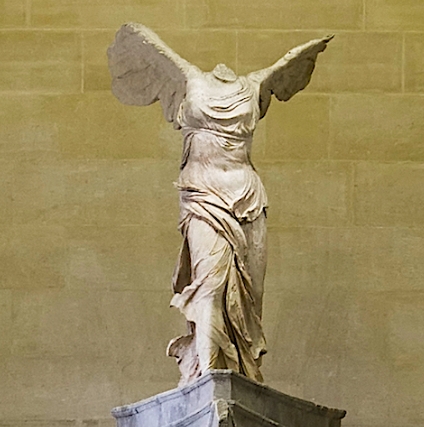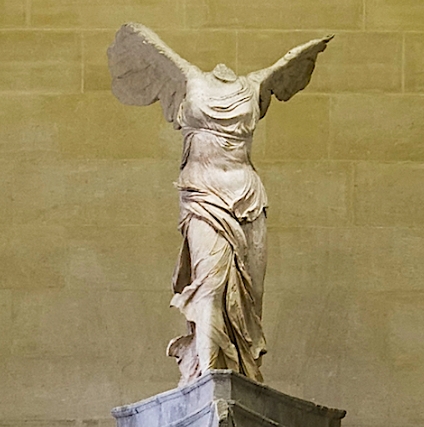Nike of the Samothrace is an outstanding work of ancient Greek sculpture. This statue not only shocked the world with its majestic scale and exquisite craftsmanship, but also won the respect of history with its dynamic shape and expressiveness. The statue was originally created to commemorate the victory of a naval battle and was placed on a high platform on the island of Samothrace to show gratitude to the gods and celebrate the victory.
The Winged Victory of Samothrace depicts the image of the goddess of victory Nike standing in the wind, with her clothes fluttering in the wind, giving people a feeling of about to fly. The sculpture has a strong sense of dynamics, and the goddess’s posture is elegant and powerful, which is in sharp contrast to the usual muscular Greek sculpture, which usually shows more muscle portrayals and symbols of strength about male heroes. The Winged Victory of Samothrace, through the delicate posture of the goddess and the natural flow of her clothes, conveys a spiritual power and beauty that transcends physical strength.
The historical significance of this sculpture is also very important. It not only represents the ancient Greeks’ celebration of victory, but also reflects their highly developed marine civilization and worship of the sea god. The design of the sculpture cleverly uses the viewer’s perspective and natural light, so that the viewer can feel the vividness and dynamism of the statue no matter from which angle.
The preservation and restoration of “Nike of the Samothrace” is also an important topic in art history. Although the original work has been damaged by the erosion of time, through scientific restoration technology, the statue has been exhibited in major museums around the world and continues to show its historical and artistic value to the world. It attracts countless tourists every year, and its image has even appeared in many modern cultural works, becoming a symbol of victory and hope.
In short, as a witness of art and history, “Nike of the Samothrace” is a treasure in ancient Greek sculpture art. It not only shows the extraordinary skills of ancient Greek artists, but also conveys an eternal spiritual pursuit and unremitting exploration of beauty.





